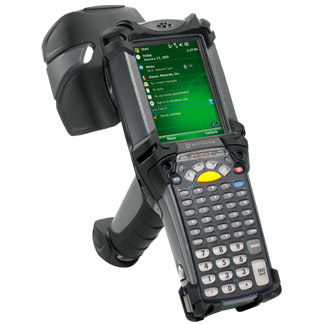Input Devices:
Sensor; convert a real world properties into data that computer can process e.g.

- temperature sensor-detect temperature (to control the temperature e.g. in science experiments)
- pressure sensor-detect pressure (e.g. someone standing on it)
- light sensor-detect light (control light e.g. in music concert)

Radio Frequency Identification (RFID) readers; used to gather information from an RFID tag, which is used to track individual objects.
This performed by the radio waves which use to transfer data from the tag to a reader
Uses:
- passports
- smart cards
- airplane luggage
- toll booth passes
- home appliances etc
Magnetic Ink Character reader (MICR); allows details from bank cheques to be read into a computer quickly and accurately.
Optical Mark Reader; allows the data from a multiple-choice type form to be read into a computer.
Uses:

- multiple-choice exam answer sheets
- lottery forms etc
Optical character reader (OCR); can convert different types of documents, such as scanned paper documents, PDF files or images captured by a digital camera into editable and searchable data.
Bar code reader; allow the data from bar code (simply numeric code) to be read into a computer.

Uses: Point of sale (POS) etc
 Chip&PIN readers;
Chip&PIN readers; use to access the chip on the card.
Magnetic stripe readers; hardware device that reads the information encoded in the magnetic stripe located on the back of a plastic badge.
 Output devices:
Output devices:
Monitor; screen that put up peripheral output to the user e.g.

- CRT monitor-cathode ray tube-display screen; the type that has been around for years and is large and boxy.
Uses; design industry
Advantages: colour accuracy andbrightness of CRT monitors is excellent
Disadvantages: heavy and they take up a lot of desk space
- TFT (Thin Film Transistor)/LCD (Liquid Crystal Display) monitor; flat screen monitor, they replaced CRT monitor.
Uses: television sets, monitor screen, mobile phones etc
Advantages: light in weight and they take up very little desk space, also has picture quality that is as good as CRT monitors.
Disadvantages: the colors are not always correctly transcribed.
- IPS (In Plane Switching)/LCD monitor ; screen technology used for liquid crystal displays (LCDs)
Uses: main limitations of the twisted nematic field effect (TN) matrix LCDs in the late 1980s
Advantages: wide viewing angles, better colour accuracy
Disadvantages: required 15% more power than TN monitor.

- LED (Light Emitting Diode) monitor; semiconductor device that emits visible light when an electric current passes through it.
Advantages: perfectly flat screen, produce very bright image,
Disadvantages: limited viewing angle, bad pixel and screen uniformity
Printers:
 Dot matrix printer; a type of computer printing which uses a print head that moves back-and-forth, prints by impact, striking an ink-soaked cloth ribbon against the paper.
Dot matrix printer; a type of computer printing which uses a print head that moves back-and-forth, prints by impact, striking an ink-soaked cloth ribbon against the paper.
Uses: multi-part forms and address labels
Advantages: thicker media better than laser and inkjet printers
Disadvantages: lowest printing costs per page, ink is running out, the printout gradually fades.
 Wide formate printer; prints on large paper, which can range from two to more than 15 feet in width.Uses: print banners, posters, trade show graphics, wallpaper, murals etc
Advantages: high quality printing
Wide formate printer; prints on large paper, which can range from two to more than 15 feet in width.Uses: print banners, posters, trade show graphics, wallpaper, murals etc
Advantages: high quality printing
 Disadvantages: taking more time and reducing productivity, increases waste, uses more materials
Disadvantages: taking more time and reducing productivity, increases waste, uses more materials
3D printers; print out the process that builds layers to create a three-dimensional solid object from a digital model.
Uses : print organs from a patient's own cells, print 3D model
Advantages: can print out 3D shapes, no storage cost
Disadvantages: limitations of size, limitations of raw material


